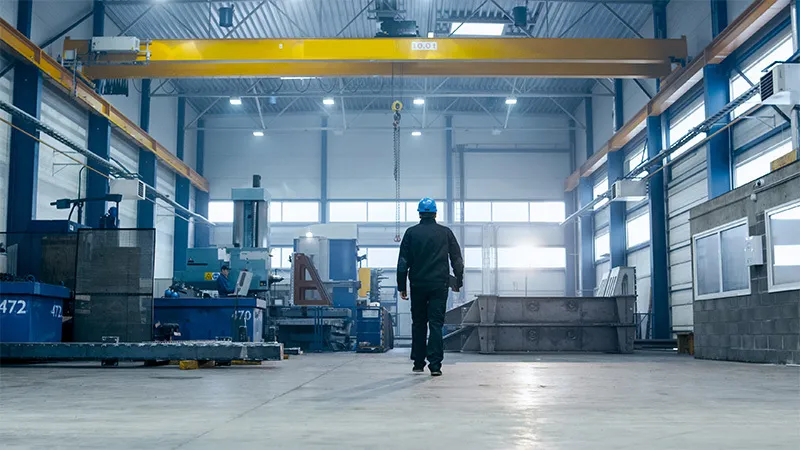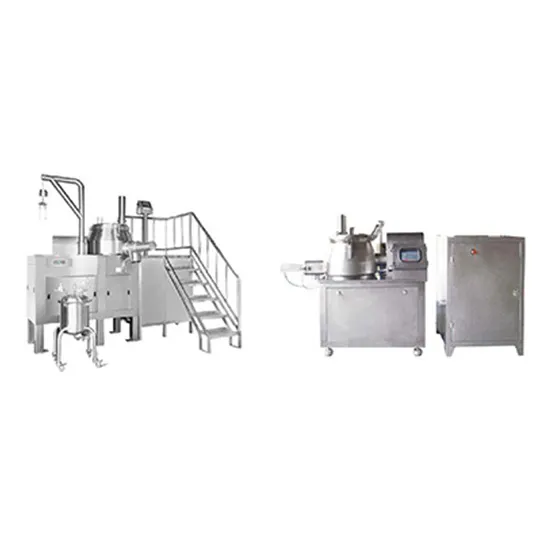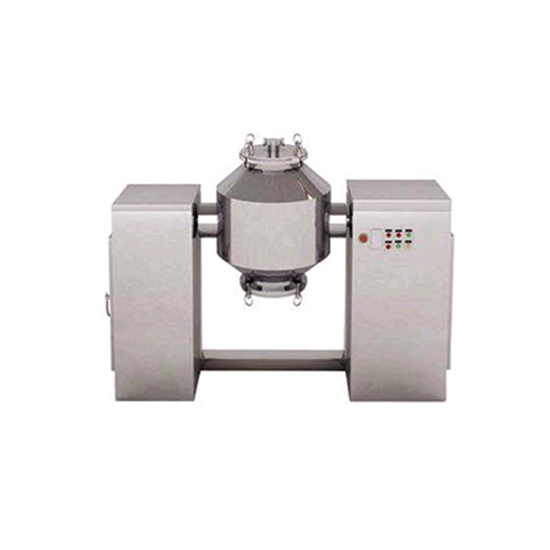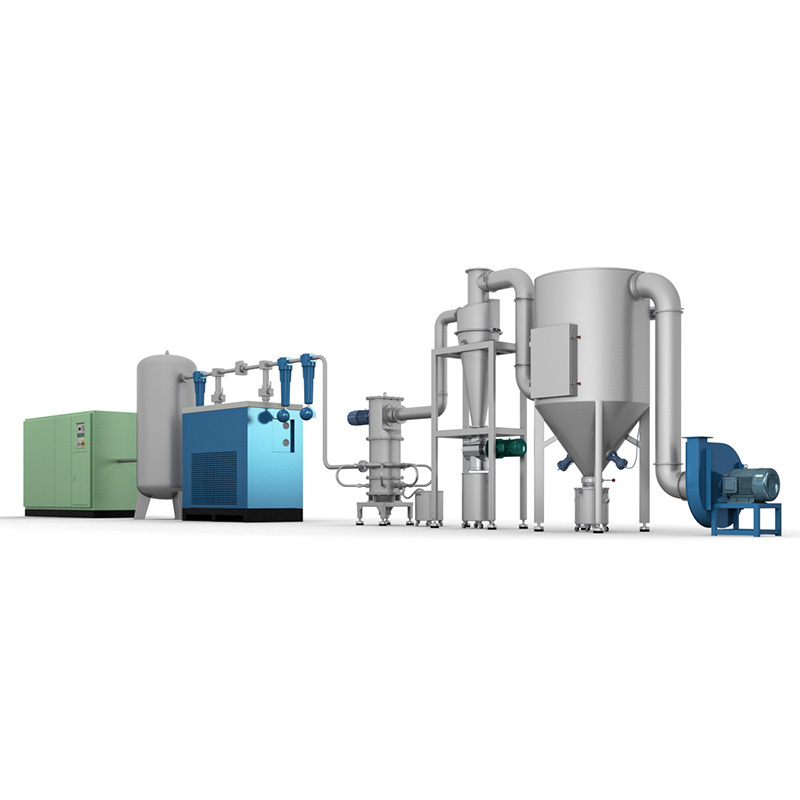NEWS
How to Maintain Your Grinder Mixer Machine: A Step-by-Step Guide
Oct 02,2023
Table of Contents:
1. Introduction
2. Why is Grinder Mixer Machine Maintenance Important?
3. Step 1: Regular Cleaning and Inspection
3.1 Cleaning the Exterior and Interior
3.2 Inspecting for Damages
4. Step 2: Lubrication and Greasing
5. Step 3: Blade and Belt Maintenance
5.1 Sharpening and Replacing Blades
5.2 Checking and Replacing Belts
6. Step 4: Electrical Connections and Safety Measures
6.1 Checking Power Supply and Cords
6.2 Ensuring Safety Features
7. Step 5: Calibration and Adjustment
7.1 Checking Speed and Mixing Accuracy
7.2 Adjusting Controls and Settings
8. Step 6: Storage and Protection
8.1 Proper Storage Practices
8.2 Covering and Protecting the Machine
9. Frequently Asked Questions (FAQs)
9.1 How often should I clean my grinder mixer machine?
9.2 Can I use water for cleaning the machine?
9.3 How can I tell if the blades need sharpening?
9.4 Is it necessary to replace belts regularly?
9.5 What safety precautions should I take while operating the machine?
10. Conclusion
Introduction
Maintaining your grinder mixer machine is vital for its longevity and optimal performance. Regular maintenance not only helps prevent breakdowns but also ensures the quality of your mixing results. In this comprehensive guide, we will walk you through the step-by-step process of maintaining your grinder mixer machine effectively.
Why is Grinder Mixer Machine Maintenance Important?
Proper maintenance of your grinder mixer machine offers several benefits. It helps extend the machine's lifespan, prevents costly repairs or replacements, improves operational efficiency, and ensures consistent mixing results. By following a regular maintenance routine, you can maximize the return on your investment and keep your machine running smoothly for years to come.
Step 1: Regular Cleaning and Inspection
To start, it is essential to clean and inspect your grinder mixer machine regularly. This step helps remove any residue, debris, or build-up that could affect its performance or contaminate the ingredients.
3.1 Cleaning the Exterior and Interior
Begin by disconnecting the machine from the power source and removing any remaining ingredients. Use a soft cloth or brush to clean the exterior surfaces, removing any dirt or dust. For the interior, refer to the manufacturer's guidelines for specific cleaning instructions. Some machines may require disassembly for thorough cleaning, while others can be cleaned with a brush or compressed air.
3.2 Inspecting for Damages
During the cleaning process, inspect the machine for any damages or wear. Check for loose or damaged components, such as screws, belts, or blades. If you notice any issues, address them promptly to prevent further damage or safety hazards.
Step 2: Lubrication and Greasing
Proper lubrication and greasing are crucial for maintaining the smooth operation of your grinder mixer machine. Consult the manufacturer's manual to identify the recommended lubrication points and use the appropriate lubricant.
Apply a thin layer of lubricant to the designated parts, such as bearings, shafts, or gears. Avoid over-lubricating, as this can attract dirt or interfere with the machine's functionality. Regular lubrication helps reduce friction, wear, and noise, extending the life of your machine.
Step 3: Blade and Belt Maintenance
The blades and belts play a vital role in the performance of your grinder mixer machine. Regular maintenance of these components ensures efficient mixing and prevents any damage or safety risks.
5.1 Sharpening and Replacing Blades
Blades may become dull over time, affecting the quality of your mixing. Check the condition of the blades regularly and sharpen them as needed. Follow the manufacturer's instructions or seek professional assistance for proper blade sharpening techniques. If the blades are severely worn or damaged, consider replacing them to maintain optimal performance.
5.2 Checking and Replacing Belts
Inspect the belts for signs of wear, cracks, or stretching. If you notice any abnormalities, replace the belts promptly. Follow the manufacturer's guidelines for the correct belt replacement procedure. Regularly checking and replacing belts ensures smooth operation and prevents unexpected breakdowns.
Step 4: Electrical Connections and Safety Measures
Ensuring the electrical connections are secure and maintaining safety measures are crucial aspects of grinder mixer machine maintenance.
6.1 Checking Power Supply and Cords
Inspect the power supply and cords for any signs of damage or wear. Replace any frayed or damaged cords immediately to prevent electrical hazards. Ensure the power supply is stable and meets the machine's requirements. Unstable power supply can damage the machine or compromise its functionality.
6.2 Ensuring Safety Features
Verify that all safety features, such as emergency stops or overload protection, are in proper working condition. Regularly test these features to ensure they function as intended. Adhering to safety guidelines and using the machine responsibly reduces the risk of accidents or injuries.
Step 5: Calibration and Adjustment
Regular calibration and adjustment of your grinder mixer machine are essential to maintain accurate mixing results and achieve the desired consistency.
7.1 Checking Speed and Mixing Accuracy
Verify the machine's speed and mixing accuracy by referring to the manufacturer's specifications or instructions. Adjust the machine's settings if necessary to achieve the desired mixing results. Regular calibration ensures consistent performance and prevents deviations in mixing quality.
7.2 Adjusting Controls and Settings
Familiarize yourself with the machine's controls and settings. Make necessary adjustments to achieve the desired mixing time, speed, or other parameters. Regularly reviewing and adjusting the machine's controls helps optimize its performance and ensures efficient mixing.
Step 6: Storage and Protection
Proper storage and protection of your grinder mixer machine are crucial to prevent damage and maintain its condition during periods of non-use.
8.1 Proper Storage Practices
Clean the machine thoroughly before storing it to remove any remaining residue or debris. Follow the manufacturer's recommendations for storing the machine in a dry and well-ventilated area. Consider covering the machine with a protective cover to shield it from dust or moisture.
8.2 Covering and Protecting the Machine
Use a suitable cover to protect the grinder mixer machine when it is not in use. This prevents dust accumulation, reduces the risk of damage, and prolongs the machine's lifespan. Ensure the cover fits securely and provides adequate protection.
Frequently Asked Questions (FAQs)
9.1 How often should I clean my grinder mixer machine?
Regular cleaning is recommended after each use. Additionally, conduct a thorough cleaning at least once a month or as per the manufacturer's guidelines.
9.2 Can I use water for cleaning the machine?
Avoid using water directly on the machine unless specified by the manufacturer. Instead, use a brush or compressed air to remove debris and residue. Follow the manufacturer's instructions for specific cleaning procedures.
9.3 How can I tell if the blades need sharpening?
Inspect the blades for signs of dullness, such as difficulty in cutting or mixing ingredients uniformly. If you notice reduced efficiency or inconsistent results, it may be time to sharpen the blades.
9.4 Is it necessary to replace belts regularly?
Regular inspection of belts is crucial to identify signs of wear or damage. Replace belts as needed to ensure optimal performance and prevent unexpected breakdowns.
9.5 What safety precautions should I take while operating the machine?
Always read and follow the manufacturer's safety guidelines. Wear appropriate protective gear, such as gloves or safety glasses. Ensure the machine is properly grounded and avoid operating it in wet or hazardous conditions.
Conclusion
Maintaining your grinder mixer machine is vital for its longevity and optimal performance. By following the step-by-step guide provided above, you can ensure that your machine remains in top shape and delivers consistent mixing results. Remember to clean, lubricate, inspect, and calibrate your machine regularly, and prioritize safety measures to maximize its lifespan and efficiency. With proper maintenance, your grinder mixer machine will serve you well for years to come.
1. Introduction
2. Why is Grinder Mixer Machine Maintenance Important?
3. Step 1: Regular Cleaning and Inspection
3.1 Cleaning the Exterior and Interior
3.2 Inspecting for Damages
4. Step 2: Lubrication and Greasing
5. Step 3: Blade and Belt Maintenance
5.1 Sharpening and Replacing Blades
5.2 Checking and Replacing Belts
6. Step 4: Electrical Connections and Safety Measures
6.1 Checking Power Supply and Cords
6.2 Ensuring Safety Features
7. Step 5: Calibration and Adjustment
7.1 Checking Speed and Mixing Accuracy
7.2 Adjusting Controls and Settings
8. Step 6: Storage and Protection
8.1 Proper Storage Practices
8.2 Covering and Protecting the Machine
9. Frequently Asked Questions (FAQs)
9.1 How often should I clean my grinder mixer machine?
9.2 Can I use water for cleaning the machine?
9.3 How can I tell if the blades need sharpening?
9.4 Is it necessary to replace belts regularly?
9.5 What safety precautions should I take while operating the machine?
10. Conclusion
Introduction
Maintaining your grinder mixer machine is vital for its longevity and optimal performance. Regular maintenance not only helps prevent breakdowns but also ensures the quality of your mixing results. In this comprehensive guide, we will walk you through the step-by-step process of maintaining your grinder mixer machine effectively.
Why is Grinder Mixer Machine Maintenance Important?
Proper maintenance of your grinder mixer machine offers several benefits. It helps extend the machine's lifespan, prevents costly repairs or replacements, improves operational efficiency, and ensures consistent mixing results. By following a regular maintenance routine, you can maximize the return on your investment and keep your machine running smoothly for years to come.
Step 1: Regular Cleaning and Inspection
To start, it is essential to clean and inspect your grinder mixer machine regularly. This step helps remove any residue, debris, or build-up that could affect its performance or contaminate the ingredients.
3.1 Cleaning the Exterior and Interior
Begin by disconnecting the machine from the power source and removing any remaining ingredients. Use a soft cloth or brush to clean the exterior surfaces, removing any dirt or dust. For the interior, refer to the manufacturer's guidelines for specific cleaning instructions. Some machines may require disassembly for thorough cleaning, while others can be cleaned with a brush or compressed air.
3.2 Inspecting for Damages
During the cleaning process, inspect the machine for any damages or wear. Check for loose or damaged components, such as screws, belts, or blades. If you notice any issues, address them promptly to prevent further damage or safety hazards.
Step 2: Lubrication and Greasing
Proper lubrication and greasing are crucial for maintaining the smooth operation of your grinder mixer machine. Consult the manufacturer's manual to identify the recommended lubrication points and use the appropriate lubricant.
Apply a thin layer of lubricant to the designated parts, such as bearings, shafts, or gears. Avoid over-lubricating, as this can attract dirt or interfere with the machine's functionality. Regular lubrication helps reduce friction, wear, and noise, extending the life of your machine.
Step 3: Blade and Belt Maintenance
The blades and belts play a vital role in the performance of your grinder mixer machine. Regular maintenance of these components ensures efficient mixing and prevents any damage or safety risks.
5.1 Sharpening and Replacing Blades
Blades may become dull over time, affecting the quality of your mixing. Check the condition of the blades regularly and sharpen them as needed. Follow the manufacturer's instructions or seek professional assistance for proper blade sharpening techniques. If the blades are severely worn or damaged, consider replacing them to maintain optimal performance.
5.2 Checking and Replacing Belts
Inspect the belts for signs of wear, cracks, or stretching. If you notice any abnormalities, replace the belts promptly. Follow the manufacturer's guidelines for the correct belt replacement procedure. Regularly checking and replacing belts ensures smooth operation and prevents unexpected breakdowns.
Step 4: Electrical Connections and Safety Measures
Ensuring the electrical connections are secure and maintaining safety measures are crucial aspects of grinder mixer machine maintenance.
6.1 Checking Power Supply and Cords
Inspect the power supply and cords for any signs of damage or wear. Replace any frayed or damaged cords immediately to prevent electrical hazards. Ensure the power supply is stable and meets the machine's requirements. Unstable power supply can damage the machine or compromise its functionality.
6.2 Ensuring Safety Features
Verify that all safety features, such as emergency stops or overload protection, are in proper working condition. Regularly test these features to ensure they function as intended. Adhering to safety guidelines and using the machine responsibly reduces the risk of accidents or injuries.
Step 5: Calibration and Adjustment
Regular calibration and adjustment of your grinder mixer machine are essential to maintain accurate mixing results and achieve the desired consistency.
7.1 Checking Speed and Mixing Accuracy
Verify the machine's speed and mixing accuracy by referring to the manufacturer's specifications or instructions. Adjust the machine's settings if necessary to achieve the desired mixing results. Regular calibration ensures consistent performance and prevents deviations in mixing quality.
7.2 Adjusting Controls and Settings
Familiarize yourself with the machine's controls and settings. Make necessary adjustments to achieve the desired mixing time, speed, or other parameters. Regularly reviewing and adjusting the machine's controls helps optimize its performance and ensures efficient mixing.
Step 6: Storage and Protection
Proper storage and protection of your grinder mixer machine are crucial to prevent damage and maintain its condition during periods of non-use.
8.1 Proper Storage Practices
Clean the machine thoroughly before storing it to remove any remaining residue or debris. Follow the manufacturer's recommendations for storing the machine in a dry and well-ventilated area. Consider covering the machine with a protective cover to shield it from dust or moisture.
8.2 Covering and Protecting the Machine
Use a suitable cover to protect the grinder mixer machine when it is not in use. This prevents dust accumulation, reduces the risk of damage, and prolongs the machine's lifespan. Ensure the cover fits securely and provides adequate protection.
Frequently Asked Questions (FAQs)
9.1 How often should I clean my grinder mixer machine?
Regular cleaning is recommended after each use. Additionally, conduct a thorough cleaning at least once a month or as per the manufacturer's guidelines.
9.2 Can I use water for cleaning the machine?
Avoid using water directly on the machine unless specified by the manufacturer. Instead, use a brush or compressed air to remove debris and residue. Follow the manufacturer's instructions for specific cleaning procedures.
9.3 How can I tell if the blades need sharpening?
Inspect the blades for signs of dullness, such as difficulty in cutting or mixing ingredients uniformly. If you notice reduced efficiency or inconsistent results, it may be time to sharpen the blades.
9.4 Is it necessary to replace belts regularly?
Regular inspection of belts is crucial to identify signs of wear or damage. Replace belts as needed to ensure optimal performance and prevent unexpected breakdowns.
9.5 What safety precautions should I take while operating the machine?
Always read and follow the manufacturer's safety guidelines. Wear appropriate protective gear, such as gloves or safety glasses. Ensure the machine is properly grounded and avoid operating it in wet or hazardous conditions.
Conclusion
Maintaining your grinder mixer machine is vital for its longevity and optimal performance. By following the step-by-step guide provided above, you can ensure that your machine remains in top shape and delivers consistent mixing results. Remember to clean, lubricate, inspect, and calibrate your machine regularly, and prioritize safety measures to maximize its lifespan and efficiency. With proper maintenance, your grinder mixer machine will serve you well for years to come.
More News










